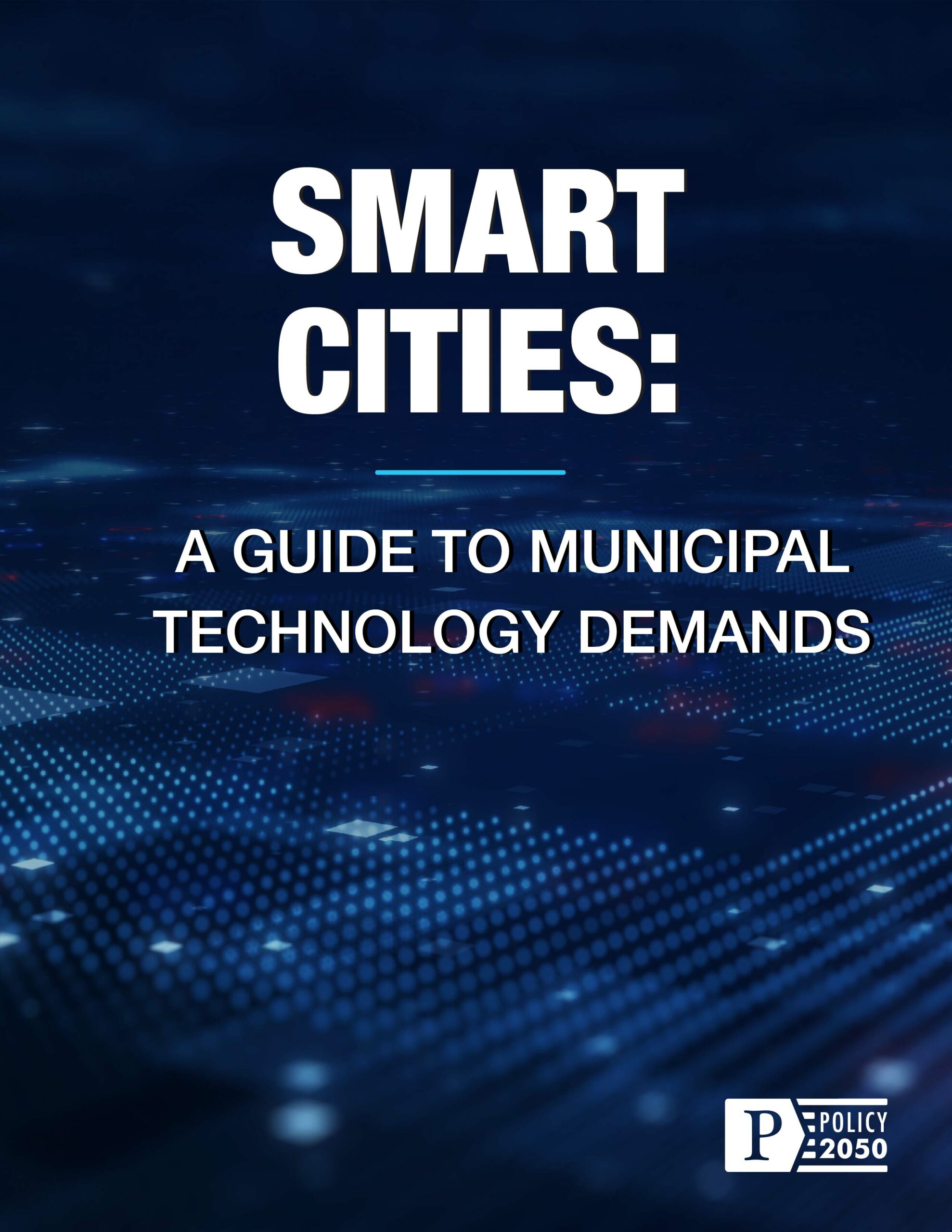By David Pring-Mill
The following text has been excerpted from Section 2.6 Reliability and Future-Proofing of the Policy2050 report “Smart Cities: A Guide to Municipal Technology Demands” in order to serve as a product sample and fulfill Policy2050’s mission “to keep the most socially-relevant insights outside of any paywall.”
Given the risks landscape, the demands of municipal decision-makers are clear and understandable: Reliability. Future-proofing. However, balancing immediate value with forward-looking solutions, from the perspective of the city, requires cross-functional technology teams operating in sync with advantageous product roadmaps.
For example, a government IT user of Cisco’s Webex Suite, now described as the “first unified, purpose-built suite for hybrid work,” recalled: “When Covid hit, we did not have any video conferencing abilities. We were able to implement this in a very short time and educate our users on how to use the system.”
This user elaborated on how managing the system was intuitive, and users were able to easily transition into using the product. However, they found the suite’s updates (likely a driver of that value) “to be constant and hard to keep up with.”
Adopting digital solutions, such as web conferencing software, is a testament to a city’s adaptability when pressured by a crisis. Scaling cloud services to match unprecedented demand is a testament to the reliability of commercially available solutions. Yet, seamless onboarding is merely the tip of the iceberg. The constant updates of these platforms, while indicative of their progressive nature, can overwhelm users. The real key? Continuous product education in sync with product evolution, ensuring users gain consistent value and a frictionless experience today while remaining ready for tomorrow.
Beyond mere reliability lies resilience: technologies that run smoothly in deployment scenarios that crash other installations. Along these lines, another government IT user identified the Webex Suite’s inherent resilience-boosting factor: “The ability to have everything in a cloud means we still have communications even after sites or main data centers go down.”
In an uncertain world, Smart City technologies should suggest a reassuring value proposition: they’re more than just current solutions—they’re investments for future challenges and opportunities. Yet, what drives the urgency to future-proof? Why look too far ahead? Factors range from evolving citizen and business expectations and environmental commitments to the need for economic competitiveness. Cities and vendors should also remember the importance of customization: while a digital transformation of one kind or another is inevitable, solutions must be tailored to each city’s unique fabric.
Overcoming Cognitive Biases
City governments, like many organizations, frequently find themselves ensnared in the quagmire of short-term pressures – budget concerns, political cycles, and the ever-looming public gaze. Layered within this are cognitive biases:
- Hyperbolic Discounting & Status Quo Bias: These often favor quick wins and the comfort of familiarity, sidelining transformative projects with long-term payouts.
- Availability Heuristic & Loss Aversion: Recent experiences and potential shortterm losses can disproportionately sway decisions, even if they come at the cost of future gains.
- Sunk Cost Fallacy: Past investments can be anchoring, preventing cities from venturing into newer, perhaps more efficient, solutions. This isn’t meant to minimize the intricacies and risks of a rip-and-replace IT project, or to overlook vendor lock-in.
Awareness is the first step toward addressing these biases. Yet, broader issues persist – the principal-agent dilemma, political business cycles, organizational inertia, regulatory ambiguity, etc. Politics and self-interest can sometimes overshadow public interest, short-term electoral gains might eclipse sustainable investments, and factors like organizational inertia and budgetary constraints can stymie innovation. Overcoming these challenges mandates a holistic view – one that integrates immediate needs with long-term strategic planning, ensuring cities are resilient, adaptable, and ever-evolving in their journey toward a smarter, more sustainable future.
Fortunately, in the aftermath of the pandemic, resilience is becoming a dominant theme across Smart City initiatives. For example, a recent RFP preludes an upcoming Joint Base San Antonio (JBSA) Utility Resilience Study, sponsored by the Alamo Area Council of Governments (AACOG) and managed by its Military Affairs Division, which will aim to assess and enhance the energy and water infrastructures of JBSA installations and Port San Antonio. By analyzing potential vulnerabilities — ranging from natural disasters to cyberattacks — the study seeks to recommend actions and funding opportunities for projects that bolster long-term resilience and sustainability for both military missions and the surrounding communities.
Key Takeaways
- Navigating the intricate dynamics of reliability and future-proofing poses a formidable technology adoption challenge for Smart Cities. At a fundamental layer beneath that, city governments grapple with a recurring tension: catering to pressing short-term demands while not sacrificing pivotal long-term vision.
- For Smart City technology end users, the value lies in a stable solution that caters to today’s needs while being resilient enough to evolve for tomorrow, ensuring an uninterrupted experience.
- The swift adoption of video conferencing is a testament both to a city’s adaptability during crises and technology companies’ scalability. However, challenges like the constant stream of updates highlight the importance of responsive, well-articulated product roadmaps and continuous product education.
- Several cognitive biases, including favoring quick wins or being anchored by past investments, can skew Smart City implementation decisions away from long-term benefits. Broader systemic challenges include the principal-agent dilemma, organizational inertia, and regulatory ambiguities.
- A holistic approach is essential to integrate immediate needs with future strategic planning, ensuring sustainable urban progress. In the aftermath of the COVID-19 pandemic, resilience has become a recurring theme.

The full report “Smart Cities: A Guide to Municipal Technology Demands” is now available for purchase on Policy2050.com.